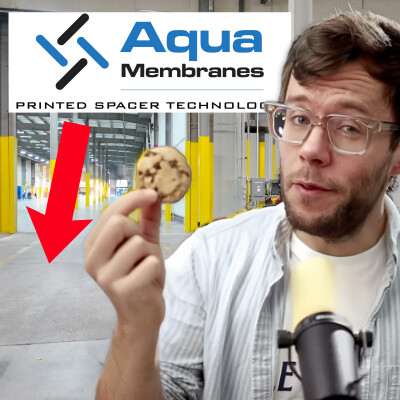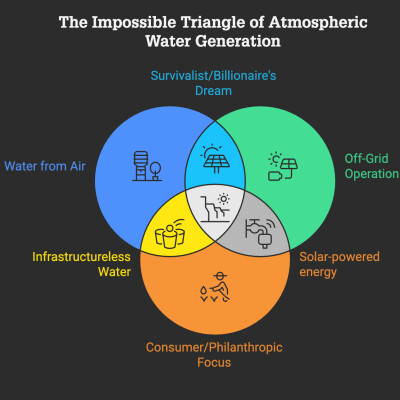Description
Can Cloud Harvesting Revolutionize Water Production? A Deep Dive into AirHES Technology
🙌 Supporters 🙌
A big thank you to my partner SimpleLab: https://link.dww.show/simplelab
⬇️ IN THIS EPISODE ⬇️
AirHES is a proposed atmospheric water harvesting technology that uses aerial collection systems (kites or balloons) with specialized mesh to capture cloud droplets. The collected water flows down through hoses, generating both pressurized freshwater and hydropower from the natural pressure head, claiming to potentially deliver the cheapest water and electricity on Earth.
This episode features my rigorous "10th man doctrine" analysis—applying contrarian due diligence to unconventional water technologies—drawing from my 15 years in the water and wastewater industry, including experience evaluating emerging technologies from desalination to atmospheric water generation.
🌶️ KEY SPICES 🌶️
☁️ Cloud-level water capture using proven fog collection mesh technology with documented efficiencies from existing literature
💧 Dual revenue streams from both freshwater production (modeled at $0.10-0.21/m³) and hydropower generation from vertical pressure head
🎯 Potential niche applications for remote, cloudy, inland communities needing 10-200 m³/day where traditional desalination faces infrastructure challenges
🔬 Rigorous physics-based analysis revealing realistic costs of $0.30-0.60/m³ after accounting for downtime, maintenance, and operational constraints
⚖️ Technology requires overcoming complex engineering trade-offs between pipe weight, friction losses, buoyancy, wind loading, and airspace regulatory hurdles
🥜 IN A NUTSHELL 🥜
Does the technology actually work? The mesh physics and fog collection principles are sound and well-documented, but cloud-level capture efficiency, uptime, and real-world performance remain unproven until multi-month instrumented pilots are conducted.
What are the biggest technical challenges? Running kilometers of pressure hoses vertically requires solving complex trade-offs between pipe weight, friction losses, buoyancy, wind loading, and material costs—issues that significantly impact economic viability.
Where could AirHES actually succeed? The technology shows promise for remote, persistently cloudy inland communities far from coastlines, mining camps at elevation, and island interiors where traditional reverse osmosis faces permitting barriers or extreme infrastructure costs.
Is the electricity generation worthwhile? Power output represents only ~8% of revenue in AirHES's own models, with typical systems generating just 2-3 kW—barely enough to power a hair dryer—making it more of a distraction than a selling point.
Why pursue weird ideas like this? Taking unconventional technologies seriously, even when flawed, expands the "adjacent possible" in water innovation, generates valuable insights, and prevents the sector from getting trapped optimizing only conventional solutions like reverse osmosis.
#️⃣ Mentioned Links #️⃣
AirHES Technology
Packy McCormick's "Not Boring" newsletter
Send me your ideas: antoine@dww.show
Hosted on Ausha. See ausha.co/privacy-policy for more information.




